Melissa | Interview | “Aussie esoteric folksy prog rock”
Melissa was one of the first bands on the Sydney “head” scene of the early seventies to include obscure West Coast material in their live set.
Recorded over a period of nine months, their album eventually appeared on the Banner label to little response at the end of 1971. ‘Midnight Trampoline’ stands as an intriguing artefact that combines esoteric, folksy-rock redolent of Jethro Tull (‘Matalla’, ‘Getting Through’), Moody Blues-styled pastoral pop (‘Out In The Country’, ‘Jennifer In New York’), progressive blues-rock (‘Cuckoo’), and two Van Morrison covers (‘Young Lovers Do’ and ‘Madame George’). Black Widow Records reissue comes with remastered audio and textured cover including a 32-page booklet.
Where and when did you grow up? Was music a big part of your family life?
Richard Barrett: Marys, 46 km west of Sydney. It was probably 1968 when I was 18 or 19 that I left home to share a flat in Glebe, Sydney with Bob Gunn. Not particularly. I do remember we had some children’s records of Grieg’s ‘Peer Gynt’, Tchaikovsky’s ‘The Nutcracker Suite’ and Prokofiev’s ‘Peter and the Wolf’, and my father had a few 78 rpm records… Louis Armstrong and Bob Crosby And The Bob Cats . We listened to music on the radio too, of course.
Joe Creighton: I grew up in Belfast, Northern Ireland. My teenage years were in the ‘60s and that was a great time for music. Belfast had a rocking music culture with lots of live venues. I used to go and see Van Morrison perform with his band Them. My parents were quite religious and sang in church so there was always a lot of singing at home. My mother introduced me to Elvis Presley, The Everly Brothers, Hank Williams and lots of country music. The Shadows were a big guitar band back then.
Robert “Bob” Gunn: I lived my first 17 years of life in England mostly at a seaside town called Lancing in Sussex.
When did you begin playing music? Who were your major influences?
Richard Barrett: I received a “Morena” acoustic guitar as a Christmas present in 1959 when I was 10 years old. A year or so later I took guitar lessons for about 18 months from the local violin teacher, who also taught guitar. These were traditional lessons and I learned basic music theory and how to read music. Initially I was influenced by the instrumental guitar bands; The Shadows and The Ventures. Later it was Them, The Animals, The Rolling Stones, The Beatles, then Traffic, The Yardbirds, Cream, Jimi Hendrix Experience, Led Zeppelin, Bob Dylan, The Band et cetera. Lots of bands and artists from the sixties to early seventies. And also jazz influences; Charles Mingus, Rahsaan Roland Kirk, Dave Brubeck, Miles Davis et cetera.
Joe Creighton: I got my first guitar when I was about 11 and I learned to sing Elvis Presley songs with my mother. I was in school bands. My first band was The Aside and we played quite a bit of R&B and blues. My early influences were The Shadows and of course The Beatles. The Rolling Stones came along and then I discovered Muddy Waters, Chuck Berry, Sonny Terry and Brownie McGhee, Sleepy John Estes, then into jazz and Charles Mingus, Miles Davis, Rahsaan Roland Kirk and much of that great early ‘60s jazz.
Robert “Bob” Gunn: I didn’t get serious until after I arrived in Australia in 1962. In the early days it was the Beatles but as I became more proficient as a musician my tastes broadened significantly, helped along by a stint managing record stores so I was seeing all the latest releases by all genres of rock n roll.
What bands were you a member of prior to the formation of Melissa?
Richard Barrett: I started playing in a band when I was at high school, probably 1963/64. Ken Frazer, who was in the year above me, wanted to form a band and knew I played guitar and asked me to join. I had my acoustic guitar, Ken had an old electric guitar with a couple of the low strings still attached to play bass on. No amplifier but it worked through the microphone input on his record player. Michael King was our drum-kit-less drummer, occasionally substituted by Alan Johnson, and Brian Savage was the rhythm guitarist and later singer. We started by learning guitar instrumentals like ‘Apache’, ‘Walk, Don’t Run’, ‘Pipeline’ and the ubiquitous ‘Wipe Out’. Later we started learning the songs of the English R&B bands mentioned above. We rehearsed a lot and after leaving school and getting jobs we were able to buy better instruments and amplifiers. This is where the band that became “Melissa” started. Two of the band names from this time were “The Senate”, then later “Molten Hue”.
Joe Creighton: The Aside in Northern Ireland, then when I moved to Australia a band called “The Sands” and then Melissa.

Robert “Bob” Gunn: My first band began as the Loose Ends until another band called The Loose End claimed ownership so then we changed our names to Rick And The Bad Boys.
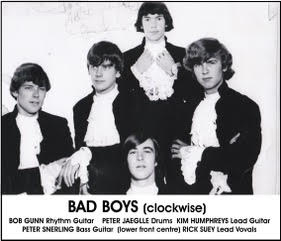
Under the producer Nat Kipner (The Bee Gees first manager) we recorded our single ‘Bad Boy’, released in 1966. My first instrument was basically playing rhythm guitar in my first band.
Can you elaborate the formation of Mellisa?
Robert “Bob” Gunn: This is a bit foggy, the band already existed when I joined them. I remember being asked to attend an audition at an empty harbourside warehouse. The band was then called Molten Hue and they were looking for a new singer, I’ve got a feeling Wal (Warren) came just after me. Funny because I had never fancied myself as a singer but I went along anyway and was surprised I got the job. Then began the best time of my young life. Eventually I became professional which translates into no day job, no money but feeling cool anyway. I was inspired by listening to Ian Anderson of Jethro Tull. I decided to buy my flute. I must say I got pretty good at it. I was certainly better at playing the flute than singing. In the early days we lost our bass Ken Frazer and an amazing musician Joe Creighton joined the band. His addition lifted us to a brand new level. Joe played a brilliant bass guitar and he had a great voice very reminiscent of Van Morrison, they are both Belfast boys.
Joe Creighton: I just answered an ad and went for an auction and they asked me to join.

What sort of venues did you play early on? Where were they located?
Joe Creighton: We played mostly around Sydney in clubs and venues. We also did a few outdoor concerts.
Robert “Bob” Gunn: We played all over from Saturday night dances at Halls and Pubs all over greater Sydney to popular rock clubs like, Here, The Bowl, Chequers and Suzie Wong’s.
Richard Barrett: When the band was still called The Senate, we played at a couple of local parties in St. Marys. We were the first “rock” band to play at a school dance for St. Marys High School, which we did at the St. Marys Memorial Hall with the addition of Geoff Crewe on organ for this particular gig, mid sixties. Previously, music for the barn dance, Pride Of Erin and Canadian three-step et cetera had been provided by a trio of piano, violin and drums. We had to play for these traditional dances, hence Geoff’s inclusion, he was a good reader, but we got to play our rock songs too. First for a school dance. Melissa and The La De Das performed at this same venue, St. Marys Memorial Hall, for the “Naked Face Mobile Disco” on Friday 11th February, 1972, admission $2.00 and Melissa had another gig there 12th May, 1972. As The Senate we had played some gigs in Sydney “night clubs” or “discos”. I think it was in 1968 that drummer Warren Sparke and singer Robert “Bob” Gunn joined with Ken Frazer and myself to continue performing around Sydney with the new band name of “Molten Hue”. We played at Police Boy’s Club dances at Hornsby and Randwick-Daceyville, high school and CYO dances et cetera as well as popular city venues like Chequers, Uptight, Suzy Wong’s, Jonathan’s ,Joseph’s Coat, Whisky-A-Go-Go, the Arts Factory, Here et cetera. We also played a lot of private functions and became a particular favourite of local disc jockey Mad Mel who promoted a series of concerts and special events, later known as a “Mad Mel Stir”, on which he’d always have us perform. A lot of our gigs were suburban, e.g. Bankstown, Sutherland, Hornsby, Narrabeen, Liverpool, Campbelltown, Merrylands and even further afield to Newcastle, Maitland, Trangie and later to Tamworth and Brisbane, Qld.

How did you decide to use the name “Melissa”?
Richard Barrett: It was early 1970 that the band’s name was changed from “Molten Hue” to “Melissa”. I can’t remember why the name change occurred or who suggested it, possibly Warren or Bob. There was probably something about the incongruity of a woman’s name but no woman in the band. We had some publicity photographs taken by Peter Carrette in which a blonde female model appeared to further confuse things.
Robert “Bob” Gunn: I can’t remember why we changed our name but I am going to take credit for suggesting Melissa although once again I’m not sure why.
“Molten Hue had played a gig at the “Here” disco in North Sydney with a 16 piece orchestra (1968?), a first for a rock band in Sydney”

What influenced the band’s sound?
Robert “Bob” Gunn: There was no doubt with the addition of Joe Creighton to the band there was a strong Van Morison influence and my work with the flute suggested a bit of Jethro Tull.
Joe Creighton: I brought a bit of Irish influence to the band having been influenced myself by Van Morrison and the whole Belfast sound. The band generally had a prog rock influence with a bit of Jethro Tull with Bob Gunn’s flute playing. Although I must say we had our own sound largely and we had a crowd that followed us from gig to gig.
Richard Barrett: As mentioned above, the bands and artists of the 60s and early 70s although we were never a “cover” band who played perfect copies of other people’s songs. We always played our own interpretation of the songs in our repertoire. I’d started playing 12-string guitar for some songs (an acoustic with a DeArmond pick-up across the sound hole) and Bob was playing flute in some songs (an influence from Ian Anderson of Jethro Tull, although we didn’t play many of their songs, and from there back to Rahsaan Roland Kirk, Charles Mingus, Eric Dolphy etc.). Before these innovations, the band as Molten Hue had played a gig at the “Here” disco in North Sydney with a 16 piece orchestra (1968?), a first for a rock band in Sydney and probably for Australia. Needless to say, this was a once only performance, and the only time we came close to being a “covers” band. (The songs such as ‘The Sun Ain’t Gonna Shine Anymore’, ‘Sons And Lovers’ and ‘By The Time I Get To Phoenix’ being more pop than rock). After this we concentrated on becoming an interesting and original sounding rock quartet. And we played quite a bit louder too.
In 1970 you made a deal with Festival Records and released a single: ‘Mississippi Mamma’ / ‘Too Much of Nothing’.
Joe Creighton: We recorded it with legendary Australian engineer Spencer Lee, but I can’t remember the name of the studio.
Robert “Bob” Gunn: Yes, although it was nothing like what we were playing live but hell, it was a record so we did it. We recorded at what was one of the best recording studios in Australia, United Sound. Produced by Rory Thomas and Engineered by the brilliant Spencer Lee.
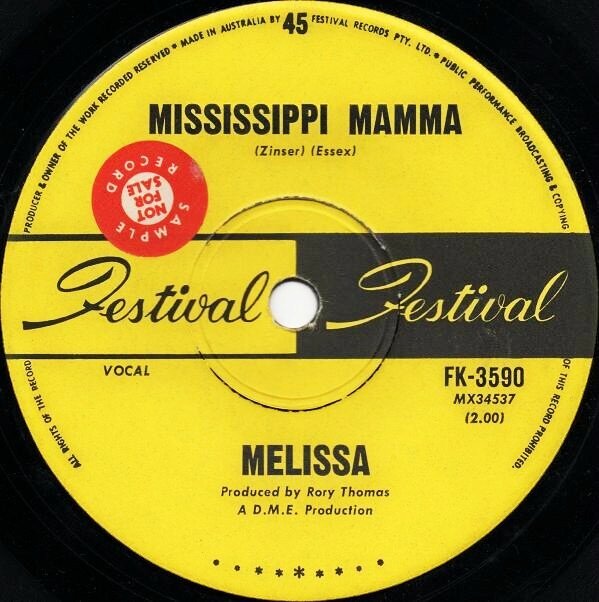
Richard Barrett: The band’s name was changed from Molten Hue to Melissa in early 1970. We were under contract to Dal Myles Enterprises, a management and booking agency. Dal Myles had come across this song, ‘Mississippi Mama’, which he thought had commercial potential and wanted us to record it. He would arrange for it’s release through Festival Records. It was originally recorded by Ohio’s Owen-B in 1970 and appeared for two weeks in America’s “Hot 100”, reaching #97. Although it was not the style of music we were playing, we recorded this song and Bob Dylan’s ‘Too Much Of Nothing’, which was in our repertoire, at United Sound Studios in Sydney with Rory Thomas producing and Spencer Lee engineering the sessions. I played the solo in ‘Mississippi Mama’ on a lap-steel guitar I borrowed from the music shop I was working in at the time. As I recalled in my “Brief History Of Melissa”, Jeff St. John and his band were recording in the main studio at the same time and some of his band and some other musicians attending his session, notably Billy Thorpe and Lobby Lloyd from the Aztecs and Peter Figures, Jeff’s drummer, ended up singing with Melissa on the chorus of ‘Mississippi Mama’. That’s Rory Thomas playing piano on the track too. ‘Too Much Of Nothing’ is all Melissa, just as we played it live, I’m singing backing vocals. We paid the recording costs, $500,and it was released on Festival in March 1970. I don’t know how many copies were pressed and we were never paid any royalties. This was Ken Frazer’s only recording with Melissa. Unfortunately the single was released at a time when local record companies and radio stations were in dispute over the amount of royalties or fees payable for playing Australian records on the radio and consequently our single received no airplay. We did appear on a couple of TV shows where we mimed to the record. I have no idea how many copies were sold. One anecdote relating to ‘Too Much Of Nothing’, at the original recording session when overdubbing the guitar solo, I played along with the first verses as a way of warming up to the guitar solo and this was recorded. This warming up was not used in the mix for the single’s release, you only hear the guitar solo. When Vicious Sloth Collectables re-released our ‘Midnight Trampoline’ album on CD in 1999, they included the Melissa single from 1970 as bonus tracks. They must have obtained from Festival Records the original tape for re-mixing because that warming up is now included in the mix, and it shouldn’t be there! You’ll find the same thing with the vinyl and CD releases from Black Widow Records, Italy, 2020.
A year later you released your only LP: ‘Midnight Trampoline’. Was this a self-release or who was behind the Banner Records? How many copies were originally pressed?
Richard Barrett: The simple answers are: It was not really a self-release, although we were once again paying the recording costs. Banner Records was Dal Myles record label and the LP was released on this label under license to Festival Records. I don’t know how many copies were originally pressed and this is irrelevant because once again we received no artist’s royalties. As with the single’s release, a lack of accounting and no accountability. A familiar story for a lot of bands apparently.
Robert “Bob” Gunn: Yes it was self-funded and self-released. Our then manager Dal Myles owned Banner Records. I think we pressed 5,000.

What’s the story behind your debut album? Where did you record it? What kind of equipment did you use and who was the producer? How many hours did you spend in the studio?
Robert “Bob” Gunn: Like all bands we wanted to produce an album but no commercial labels were interested so we decided that we would do it ourselves. ‘Midnight Trampoline’ was born. We recorded it at United Sound, produced and engineered by Spencer Lee. The studio had a 24 track unit which was state of the art in those days. I can’t remember how long it took, but it took a long time to get the tracks down. Even longer to do the vocals because my voice needed a lot of help.
Richard Barrett: The ‘Midnight Trampoline’ album was recorded at United Sound Studios, Sydney with Spencer Lee this time acting as producer and engineer. Most of the recording took place in late night to early morning sessions when studio time was cheaper (remember, Melissa was once again paying for this) and was also determined by studio availability and Spencer’s schedule. This is why the recording which started in late 1970 stretched well into 1971. It was not a “concept” album. The band was tight and playing really well, Joe and I had written some good songs that we played live and we had a repertoire of other well-arranged songs to draw from and we wanted to make an album.
I’ve just found (October, 2020) an invoice/statement from “Spencer Lee Sound” for recording on ten different dates from 28/12/1970 to 17/5/1971 and mixing on 21/6/1971 totaling 26.5 hours, with a production fee of $200 and tape charge of 2 x 1200’ master $12.60 giving an invoice total of $982.60. Studio time would therefore be $30.00 per hour. If this was the total cost of recording the album it makes the $500 cost of the previous single an expensive undertaking! I can’t recall much about the studio equipment. It was either 8-track or 16-track, maybe two 8-tracks with a magnalink. I think the main monitors were large JBLs. The desk and ancillaries… I don’t remember.
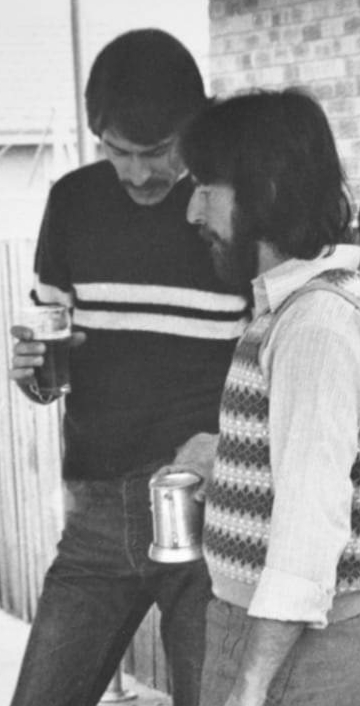
The band’s equipment was:
Joe: Gretsch bass, 6070 or 6072, a big semi-acoustic with a fabulous sound.
Warren: Probably his gold Hayman kit and Zildjian cymbals (it was his Rogers kit on the earlier single recording).
Bob: Artley concert flute,
Rick: Gibson Les Paul (with the SG body shape and the over-engineered sideways action vibrato arm), Ovation Balladeer acoustic 6-string guitar and Emperador 12-string acoustic guitar. I think it was the studio’s Fender amp I used for the electric guitar parts.
Would you share your insight on the albums’ tracks?
Robert “Bob” Gunn: My overall thoughts about the album is that I’m proud of it with all its faults along with my mediocre voice. My favourite tracks on this are the originals written by Rick and Joe. These songs were very well constructed and arranged and the lyrics creative and new. So ‘Matalla’, ‘Getting Through’ and ‘Jennifer In New York’. I think I played my best flute on these tracks as well. I always thought ‘Out In The Country’ didn’t fit and thank god for Ted Mulry who lifted the vocals with his harmonies. ‘Cuckoo’ is the only track that didn’t have my voice overdubbed but it was OK. I thought the arrangement of the Van Morrison numbers ‘Young Lovers Do’ was very well done by Rick and Joe. Joe singing ‘Madam George’ was almost Van Morrison’s great performance.
Richard Barrett: In September 1970, bass player Ken Frazer (who had married in June) played his last gig with the band. It was also in September 1970 that Irishman Joe Creighton, bass player and singer, joined Melissa. His Belfast accent gave a uniqueness to his singing voice and his rhythmic and melodic style of bass playing was perfect for the band. For a time we both rented flats in the same terrace house in McMahon’s Point, Sydney. I shared the top flat with my brother, Joe and his girlfriend (who later became his wife) had the middle flat, and our landlord and his family lived on the ground floor. Joe and I spent a lot of time listening to music together (including Van Morrison and a lot of jazz records) and we started writing together too. We later signed to Dal Myles’ publishing company, Mountain Music, when these songs were to be recorded. Can you believe it? Signed to the same company for management, bookings, recording and publishing! How naive were we? Talk about conflict of interest!
Recording started in late December, 1970 (according to the invoice mentioned above). The rhythm tracks were recorded live in the studio, i.e. bass, drums and electric rhythm guitar, with a guide vocal from Bob or Joe, the main vocal to be overdubbed later, as well as flute, guitar solos, acoustic guitar parts, vocal harmony, percussion et cetera. Before I comment on the individual tracks I should add some information from my “Brief History Of Melissa”.
Joe Creighton played his last gig with Melissa at the Paddington Town Hall on the 28th of March,1971, a gig we shared with Tully. Shortly thereafter, and newly married, he and his wife set off on their honeymoon which was to include a return to Ireland. Melissa resumed gigs in May,1971 with new bass player Ken “Claude” Hanley and pianist Glen Farley. At this time the ‘Midnight Trampoline’ album was still not mixed and it was decided, rightly or wrongly, to have Glen Farley overdub her Fender Rhodes electric piano onto a few tracks to give some continuity to the band’s current line-up when the album was finally released. Bob Gunn’s time with the band came to an end on the 29th September,1 971 and his departure meant that when ‘Midnight Trampoline’ was eventually released in October, 1971, neither of the musicians singing on the album were still in the band.
‘Matalla’ (Joe Creighton & Richard Barrett)
Joe spent some time in the beachside village of Matala in Crete (Greece) on his way to Australia and I think this gave the inspiration for his lyrics. We worked on the music together and the arrangement. The basic track was recorded in one take, including the bass and drums solo section. Joe sang the main vocal and sang the “oohs” in the last verse instead of the flute fills. There is pre-echo on Joe’s voice in the middle section that gives it a double-tracked effect. I overdubbed acoustic guitar (12-string), Bob overdubbed the flute parts with a nice breathy final note and Warren recorded the reverse cymbal roll leading into the last verse. Spencer flipped the tape over to do this, not as easy as it might seem. Good tempo changes in this song, something we used in other songs too.
Joe Creighton: Yeah, ‘Matalla’ was co-written with Rick and it was about some time that I had spent in a small fishing village in the south of Crete. There was a hippy colony of people passing through and we lived in the caves that monks used to live in in past centuries.

Richard Barrett: ‘Getting Through’ (Joe Creighton)
Joe’s song, Bob’s vocal. Another fabulous arrangement, dynamic intro and use of tempo changes .Acoustic guitar overdub, guitar solo overdub, flute overdub. Some of Bob’s best flute playing too.
‘Young Lovers Do’ (Van Morrison)
Richard Barrett: A song from our live repertoire. Joe’s vocal, his Belfast accent are really noticeable here. Flute fills and solo overdubbed. Glen Farley added her electric piano to this track just before mixing and has a short solo too. The electric guitar was meant to be replaced with acoustic guitar – I don’t know why this didn’t happen.
Joe Creighton: ‘Young Lovers’ is a Van Morrison song, from ‘Astral Weeks’, that I liked singing and seemed to fit with the general direction of the band. Here’s a current version with my band:
‘Out In The Country’ (Paul Williams & Roger Nichols)
Richard Barrett: A hit for Three Dog Night from their ‘It Ain’t Easy’ album of August, 1970.The song’s lyrics with their environmental/conservation message are still relevant today. We recorded this at the insistence of our manager, Dal Myles, who wanted a more “commercial” song on the album. To this day it still sounds to me like it doesn’t belong here. There is some cryptic and incorrect information about this track on the album cover which I’ll correct here. Bob’s vocal and vocal harmony by Ted Mulry (listed as “Martin”, his given name, on the cover). I overdubbed the acoustic guitar(s). Electric guitar solo and fills by Peter Martin (a production/management decision?). I can also hear a tambourine overdub, probably Warren or Bob, and overdubbed toms (for a conga/bongo effect?) by Warren. The inclusion of this song on the album meant that the only other Creighton and Barrett composition, a song called ‘Into Your Head’, was not recorded. I’ll write more about this below.
“Cuckoo”(Traditional, arrangement by Joe Creighton & Richard Barrett)
Richard Barrett: Bob’s vocal. It sounds like the guitar solo was recorded as part of the original rhythm track. A guitar overdub of the riffs played an octave higher as well as improvised octave counterpoint during the guitar solo. Another track with Glen Farley’s electric piano was added including a solo with the drums and ensemble accents. Bass and drums solo section with overdubbed maracas, clave and tambourine by Warren.
‘Jennifer In New York'(Richard Barrett)
Richard Barrett: I was going to sing this but my attempt was pretty awful. I wrote out the lyrics for Joe and he sang it superbly .He then overdubbed a great vocal harmony. I overdubbed 6-string and 12-string acoustic guitar parts. Bob overdubbed his flute part– another example of his fine playing. The eastern sounding solo section was composed, and performed pretty flawlessly. Warren came up with interesting and original drum parts throughout these recordings and this track is no exception –just listen to that bass drum work. Joe’s bass playing was equally remarkable –his ability to combine rhythmic and melodic ideas so seamlessly is a highlight of all these tracks and this track is a fine example of that ability.
Joe Creighton: ‘Jennifer in New York’ is a beautiful song written by Rick. I think it is one of the strongest songs on the album.
‘Madame George’ (Van Morrison)
Richard Barrett: Another song from our live repertoire of that time. Joe’s vocals. The arrangement is basically a gradual build-up in dynamics from a sparse beginning. Acoustic guitar overdub. Overdubs of flute fills and solo, electric guitar fills and solo. Glen Farley’s electric piano added fills and solos also. Warren overdubbed tom-toms for a tympani-like effect to build up to the final fade-out.
Joe Creighton: ‘Madame George’ is a Van Morrison song also from the ‘Astral Weeks’ album. ‘Astral Weeks’ had a profound effect on my music. It was released in 1968 and I think it is one of Van’s best albums.
Was there a certain concept behind the album?
Joe Creighton: I don’t know if there was a particular concept or if we just wanted to record the songs we had available.
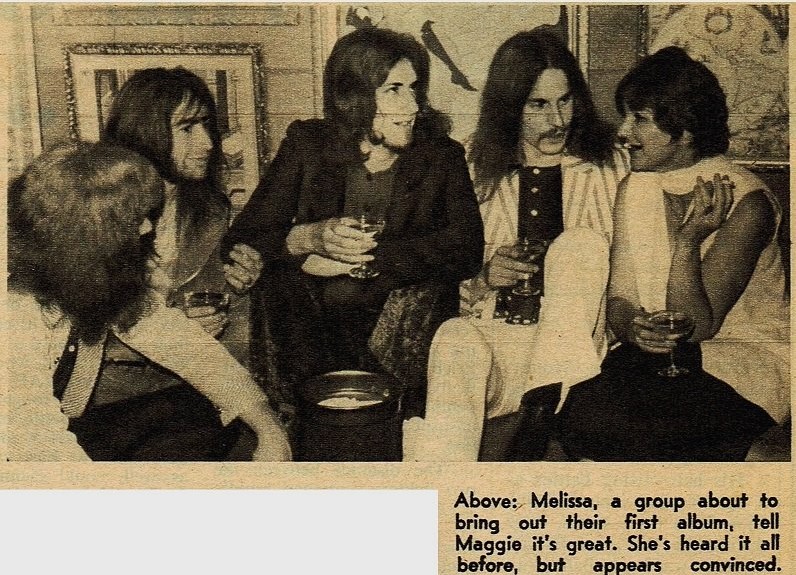
Can you elaborate on the Australian rock scene at the time?
Robert “Bob” Gunn: The rock scene in Australia was at its height gigs every weekend, sometimes with three bands on the same program. It was very unusual for us to not be working.
Joe Creighton: There is a saying that if you can remember the 70’s then you weren’t there!!! There were a lot of bands playing at that time and quite a few gigs. A lot of it was pop music but there were some great bands doing good music too. Bands like Tully, Doug Parkinson In Focus, Max Merritt & The Meteors, Tamam Shud, Billy Thorpe and the Aztecs, Jeff St John’s Copperwine, Wendy Saddington, Chain, Daddy Cool…
Richard Barrett: It was a great time to be playing in a band. As I’ve mentioned previously there were Police Boys Club dances, Catholic Youth Organisation dances, a lot of high schools were now hiring rock bands for their school dances. There were a lot of pubs, wine bars, “night club” and “disco” venues plus private parties and various festivals and outdoor concerts. Most bands had gigs every weekend and a lot of the top bands performed at two or three venues in one night. Some of the bands Melissa shared gigs with were: Billy Thorpe and the Aztecs,Max Merritt & The Meteors, Tully, The La De Da’s, Velvet Underground, Heart & Soul, Sun, Clapham Junction, Jeff St John. We rarely backed solo artists, but in 1968 we worked with Johnny Farnham at the Hornsby Police Boys Club dance (the time of ‘Sadie (The Cleaning Lady)’, and his early solo career) and in 1972 with Doug Parkinson at The Lands Office Hotel in Brisbane, Qld. We performed with Ray Stevens at one of the “Mad Mel Stirs” under the harbour bridge pylons in Sydney and were the support band for Elton John’s concert at Randwick, Sydney in October, 1971, part of his first Australian tour. We were paid $40 to $100 for most gigs (that’s for the whole band, NOT each) and less agent’s commission of course, usually 10% (later 15%).Occasionally we’d get $120 or $150.
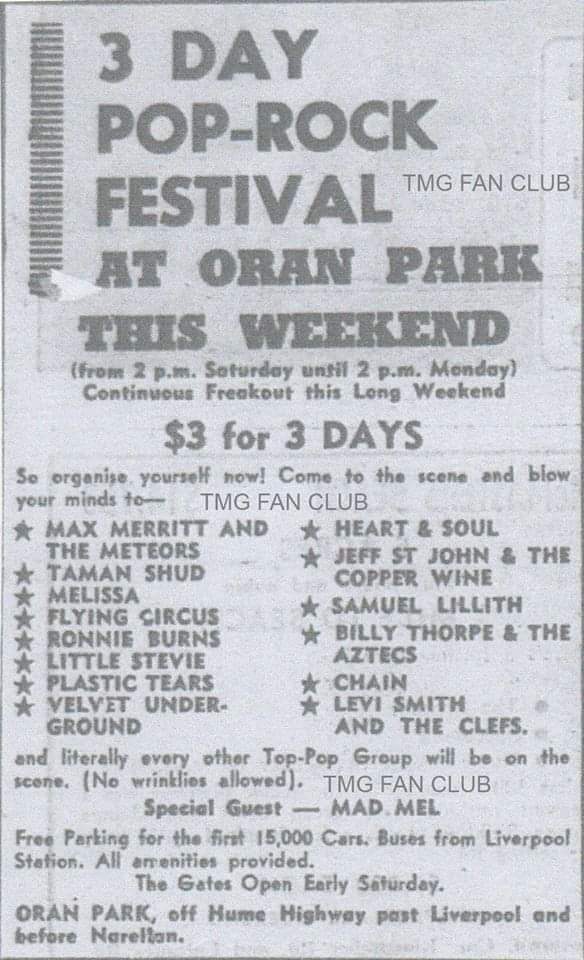
What were some of the bands you gigged together? Are there any bands you would like to mention, but they haven’t recorded much or even anything?
Joe Creighton: Max Merritt & The Meteors were one of my favourites. I just received a message an hour ago from my sax player who used to play with Max told me Max just passed away. Very sad news.
Robert “Bob” Gunn: There were so many bands we worked with, I can’t remember all of them but as an example, Chain, Zoot, The La De Da’s, Tully, Jeff St John, Tully, Tamam Shud, Max Merritt & The Meteors. There were bands that haven’t recorded such as Velvet Underground, Africa, Elm Tree.
Were you inspired by psychoactive substances like LSD at the time of writing the album?
Joe Creighton: Somewhat! But mostly cannabis.
Richard Barrett: No.
Robert “Bob” Gunn: No, I wasn’t and I don’t think Rick or Wal were, never certain about Joe but regardless he was always cool. I left the band before it finished. We didn’t part company in a very friendly manner. I knew there was talk about getting me to leave the band. I overheard some talk when we were at a gig in Narrabeen, I think they were about to tell me but I beat them to it accusing them of being sneaky. I packed up my PA and stalked off into the night. My ego was shattered but they were right of course my vocals just weren’t up to snuff. As I got older, I regretted leaving like that. I didn’t really talk to them much after that. It was only in recent years I have reconnected. When I left the band, I moved across into musical production producing concerts, tours and recordings, and musical coordination. I ended up with Australia’s largest privately managed orchestra.
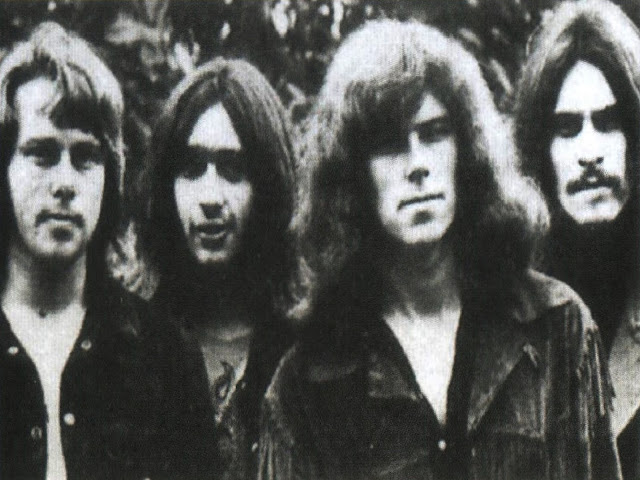
What happened after the band stopped? Were you still in touch with other members? Is any member still involved with the music?
Joe Creighton: I played for a while with a band called The Black Sorrows and I ran into Warren when we came through his area in New South Wales. I am in contact with Ric on Facebook
Richard Barrett: From October, 1971 Melissa continued with Warren, Rick, Ken Hanley, singer Chris Keystone and singer/guitarist Peter Saurine. This was a very good band, and by not trying to emulate the previous band developed their own style. Peter was a songwriter and contributed his original material to the repertoire and having a great female vocalist in Chris Keystone really added to what the band could perform. It’s a great shame that this band didn’t make any recordings. It all came to an end on 13th May,1972 when Melissa played their final gig at the Goldstein Hall, University of NSW for the New Guinea Students Association. I gradually lost touch with all the members of ‘Melissa. I re-connected with Warren around the time ‘Midnight Trampoline’ was released on CD in Australia (1999) and in the last few years (via Facebook) with Joe and Chris and finally this year with Bob. Ken Frazer worked for a record company then went on to own and run his own very successful retail record store. Bob worked for a time in management and bookings and then went on to become a producer of live musical shows, event management and orchestra manager. Joe is one of Australia’s top rock bass players and backing vocalists and has played with many top Australian pop and rock artists including thirteen years with the John Farnham Band. He’s a great songwriter and has recorded four solo albums. Warren is still a working musician too. His current band is the Sultans. He has previously worked with the bands of Paul Pulati, Stevie Wright, Vicky O’Keefe, Linda Barnes, The Rusty Dusty Brothers, Hard Rain and Flying Time. Since the mid-seventies I have been gigging as a jazz bass player. He was involved with GandR studios for a couple of years in the late seventies. He’s played with a lot of Sydney based jazz trios and quartets, most recently The BRG Trio and Greg Englert’s Oz Jazz Trio. He played nylon string guitar for a few years with latin-jazz trio Chiera and arranged and played on their eponymous CD released in 2011.
Looking back, what was the highlight of your time in the band? Which songs are you most proud of? Where and when was your most memorable gig?
Joe Creighton: The outdoor festivals were great back then it was quite a rush going on a big stage and rocking out.
Richard Barrett: The whole experience has really been a highlight. From that high school beginning in the early sixties right up to the present day, to be able to learn and play songs with other like-minded musicians has been a treasured experience. Whether rehearsing or playing a gig it’s always been about the musical experience. I’m naturally most proud of the songs Joe and I wrote and arranged and that were recorded on the Melissa album. Everyone played so well on that recording. The most memorable gig for me was our last gig with Joe at Paddington Town Hall on 28th March, 1971.We shared this gig with Tully. They had a lot of equipment and covered the whole stage and we had to set up our gear on the floor in front of the stage. It could have been disastrous. Sometimes at a gig you can perform one song or maybe two that you play much better than ever before, but at this gig every song was like that. Whether it was knowing this was our last gig with Joe that lifted our performance I don’t know, but it’s what you strive for every time you play.
Is there any unreleased material by Melissa?
Joe Creighton: I don’t know of any.
Richard Barrett: No. I did mention above that ‘Into Your Head’, the only other Creighton & Barrett composition intended for the album, was not recorded by Melissa. However, in 1977 I did record a rough demo of this song (vocal, guitar and bass). I have a copy of this on an old cassette tape and this recording was included as a bonus track with the Black Widow Records, Italy re-release of ‘Midnight Trampoline’ in 2020.
Thank you for taking your time. Last word is yours.
Richard Barrett: Danny Burke, a fabulous artist, who’s been a friend for over fifty years, did the artwork and layout for the album cover. All pen and ink work, well before the days of computer assistance. His back cover sketch, top to bottom is Rick, Bob, Warren and Joe.

‘Midnight Trampoline’ was re-released in a limited pressing on vinyl and CD by Black Widow Records, Genoa, Italy. I’m glad that Warren, Bob, Joe and I are still alive to see the result. It was a pleasure to work with Pino Pintabona of Black Widow to bring this project to fruition. They really did an outstanding job and being the honest company they are, for the first time in fifty years I’ve received artist’s royalties. I’ll check with my publisher for composer’s royalties, another first to look forward to. Finally, my sincere and heartfelt thanks to Ken Frazer, Warren Sparke, Robert Gunn, Joe Creighton, Ken Hanley, Glen Farley, Chris Keystone and Peter Saurine. It was a real pleasure and privilege to share my musical beginnings with you. Warren’s drumming style and Joe’s rhythmic and melodic bass playing still have a big influence on my playing to this day.
Joe Creighton: It was a moment in history and there were many of what I would term “Spinal Tap” moments. I have gone on to work with many artists including John Farnham, Olivia Newton John, Kylie Minogue, The Black Sorrows, Tim Finn, Crowded House. I have recorded 4 solo albums and I currently perform a show doing the music of Van Morrison so I am still singing ‘Young Lovers’ and ‘Madame George’ after all those years. I have had a great career and I have much to be thankful for.
Robert “Bob” Gunn: If I had had the sense I have today I would have discussed stepping down as lead vocalist and becoming the rhythm guitarist and flautist for the group with an occasional vocal thrown in but that is now fifty odd years later. I have great respect for Rick, Wal and Joe as musicians and people and I’m glad we reconnected and delighted our album got a re-release.
Klemen Breznikar
Headline photo: Melissa at Stir | Colour photo of Melissa at a gig. Probably 1969 or 1970. This is the line-up that recorded the ‘Mississippi Mama’ / ‘Too Much Of Nothing’ single | Left to right: Robert “Bob” Gunn (vocals), Ken Frazer (bass), Warren Sparke (drums), Richard Barrett (guitar)

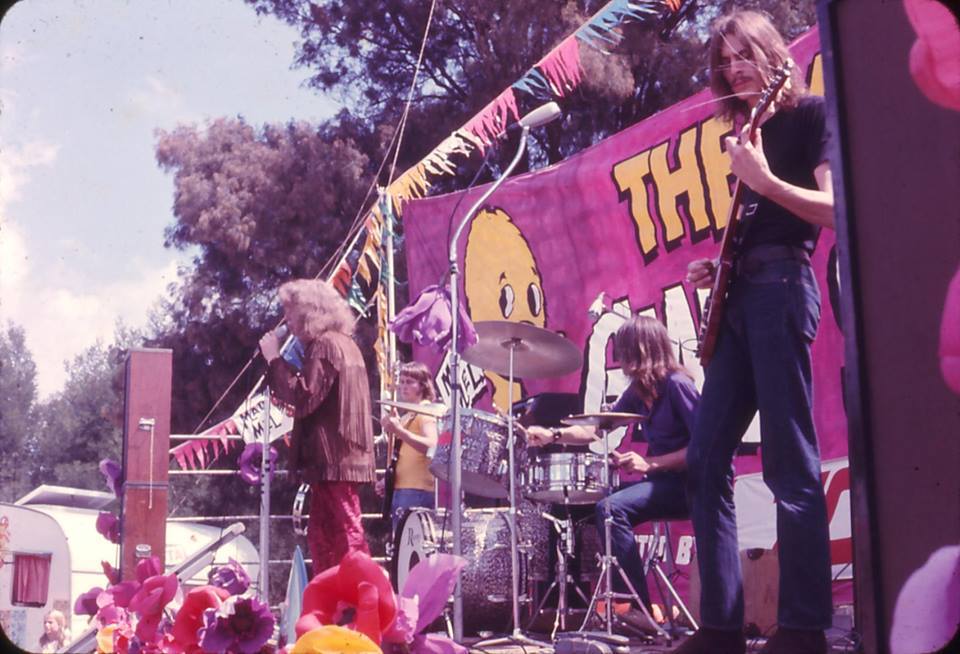
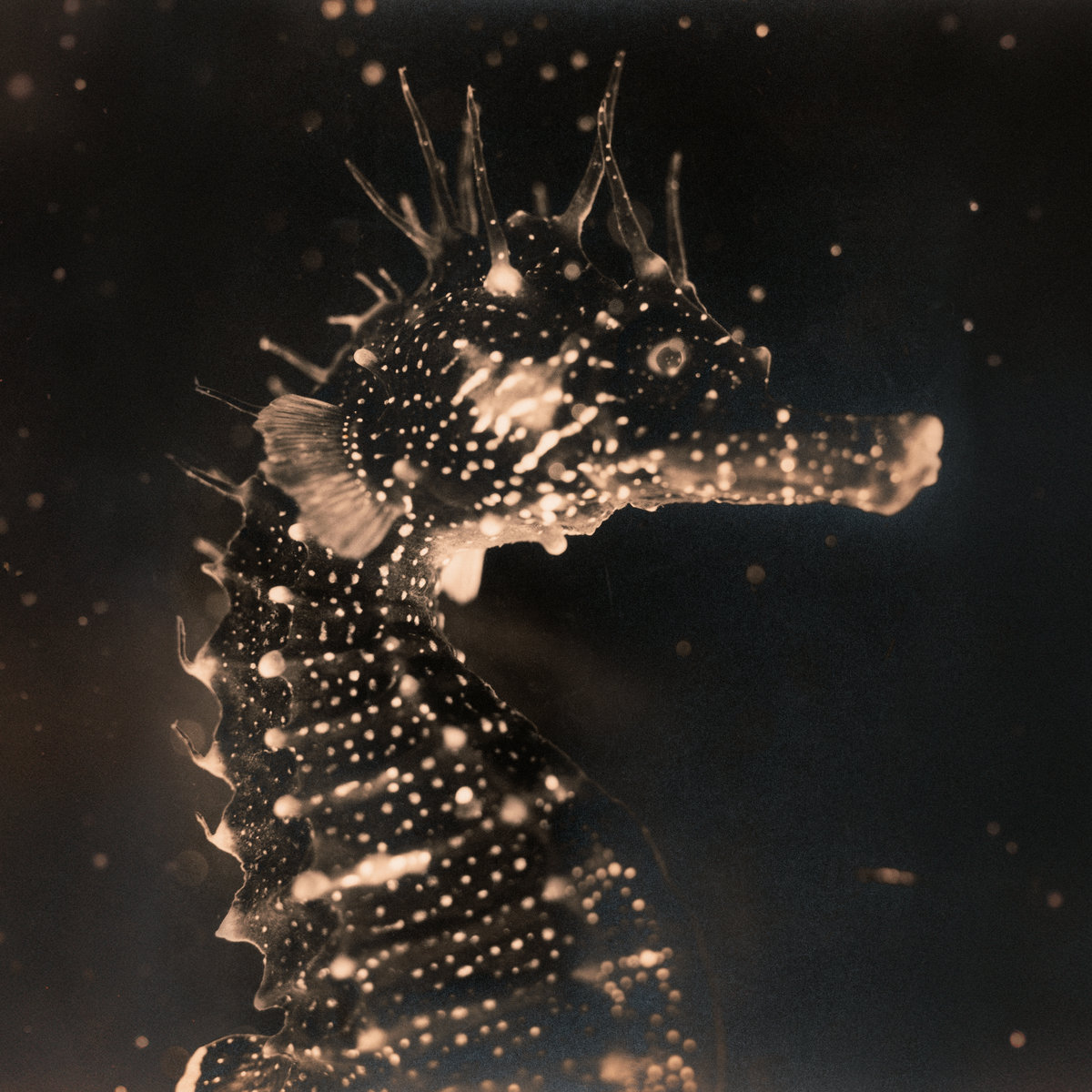
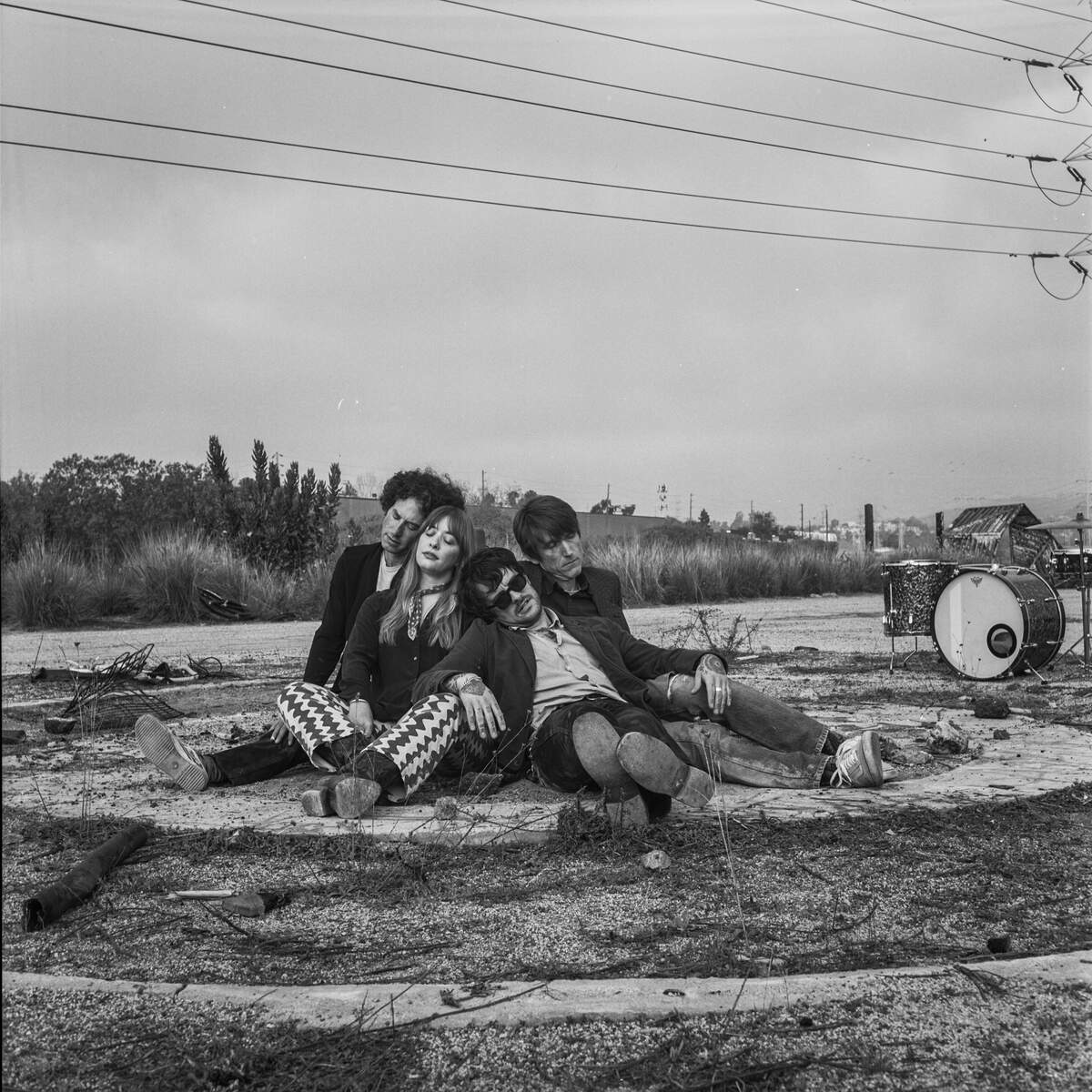
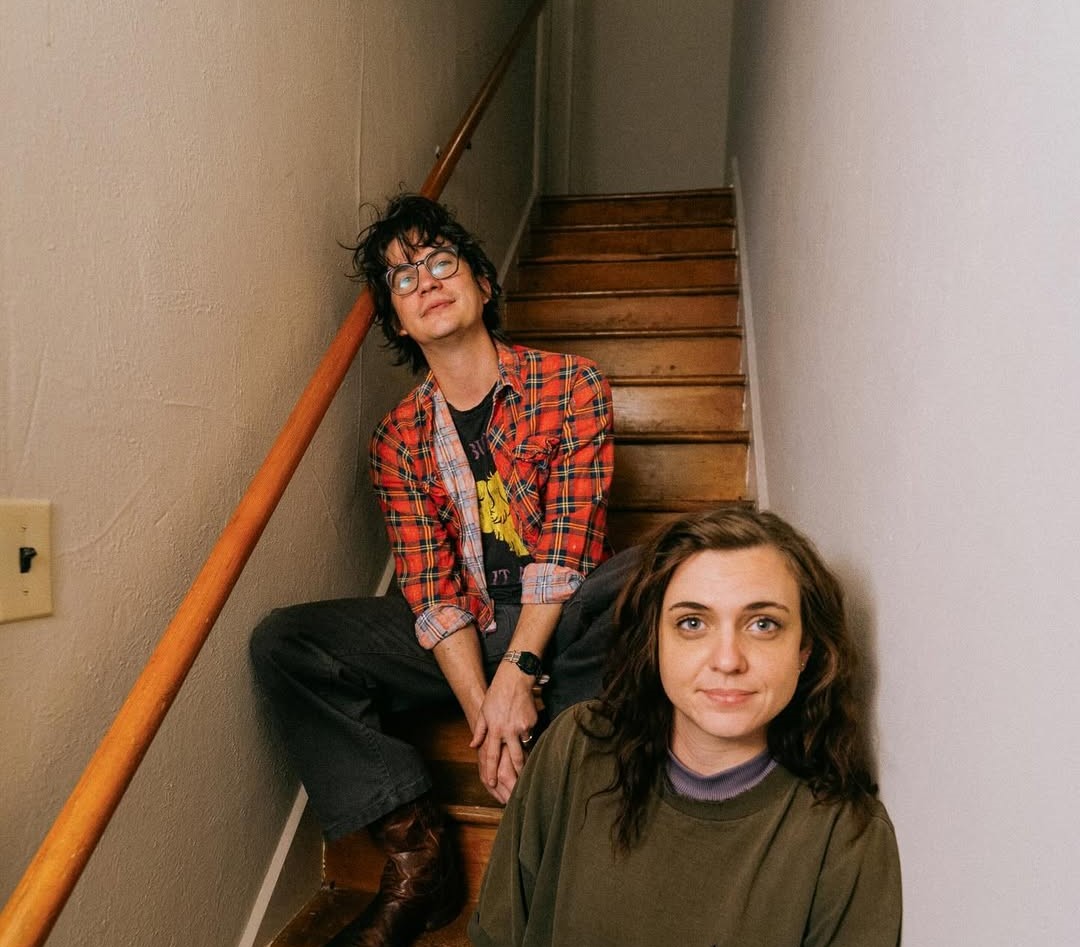
Thank you Klemen
Midnight Trampoline has been me of my favourite albums since I purchased the LP in Perth in the early 70’s. I now have it on CD but still play the original LP occasionally. Still sounds great! Had little knowledge about Melissa before reading this article so much appreciated.